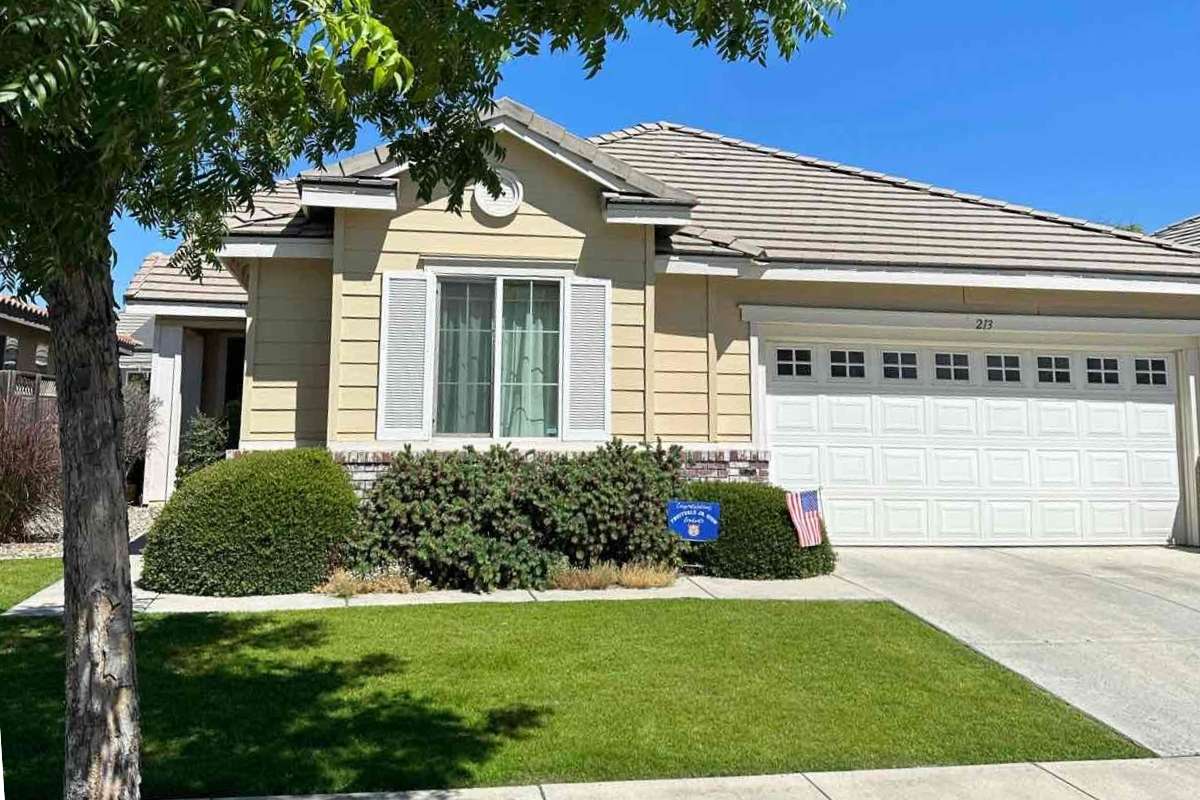
With Bakersfield’s sunny skies and mild winters, lawns rarely go fully dormant. However, spring is still a time of revitalization for the Central Valley. Here are some spring lawn care tips for Bakersfield to help your yard stay healthy and drought-resilient all season long:
1. Control Weeds
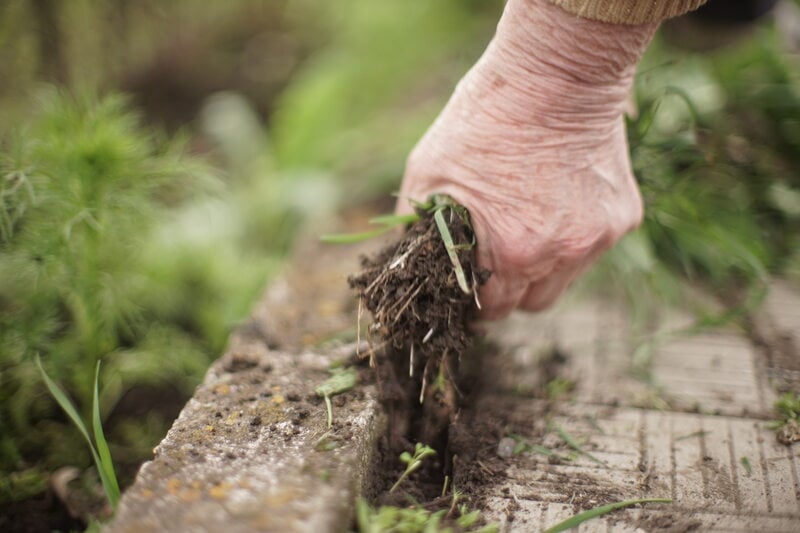
Spring is prime time to stop annual weeds from overtaking your Bakersfield lawn. Use a pre-emergent herbicide to stop their growth in its tracks. Apply it between mid-February and early March to prevent weed seeds from germinating.
If a few weeds still manage to appear, you have a couple of options:
- Hand pull weeds while they’re small and before they spread.
- Use a post-emergent herbicide to spot-treat visible weeds, especially if you’re dealing with widespread patches.
See Related:
— Common California Weeds
— When to Apply Pre-Emergent Herbicide
— How to Apply Pre-Emergent Herbicides
— Types of Post-Emergent Herbicides
2. Overseed Bare Spots
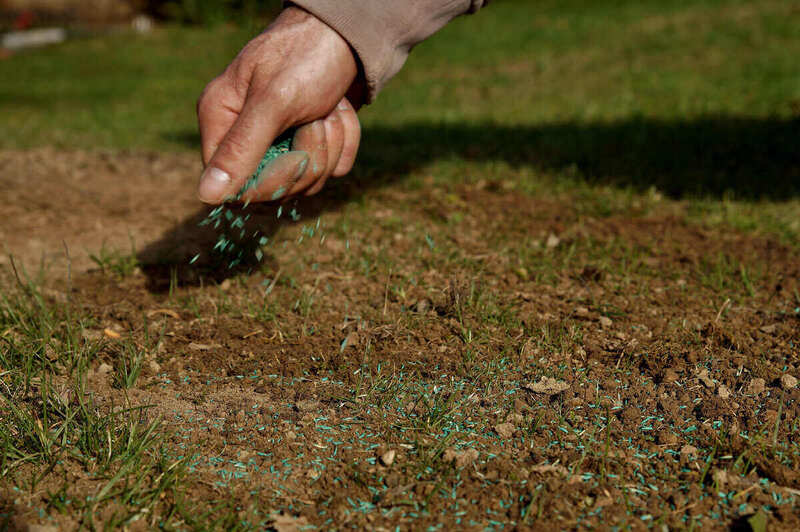
If your lawn has unsightly bare or thinning patches, spring is a great time to fill them in. For the best results, plan to overseed when soil temperatures stay consistently between 65 and 75 degrees —which in Bakersfield typically happens between mid-March and mid-April.
Overseeding basics:
- Rake your lawn to remove debris and loosen the soil in the spots you want to overseed.
- Spread the grass seed evenly.
- Water thoroughly.
- Spread straw over the top to prevent birds and winer from removing the seeds.
See Related:
— When to Overseed in Spring
— How to Overseed a Lawn in 8 Simple Steps
— When to Mow After Overseeding
3. Mow Often
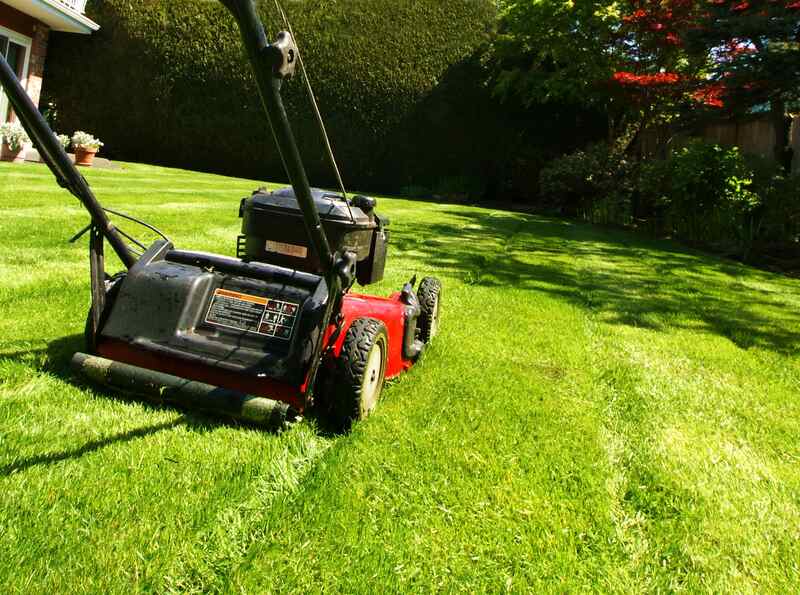
Grass starts to grow more aggressively in late spring. This is the time to start mowing your grass more often. Mowing correctly rewards you with a healthy, beautiful lawn. Here are some quick mowing tips for optimal results.
- Adjust your mower’s height according to the season. During spring, you want to mow short because it discourages diseases and helps you to eliminate the growth of weeds as you try to suppress them.
- Sharpen your mower blade. Have you tried to cut paper with dull scissors? It shreds the paper and doesn’t create a clean cut. Dull mower blades do the same thing. They shred your grass, which will cause it to turn brown.
- Alternate your mowing pattern. It’s easy to get into a habit, especially with something like mowing. However, going over the same pattern each time will cause the grass to bend in that direction. So change your mowing pattern often.
- Never remove more than one-third of the grass blade at a time. This rule is the “golden” rule of mowing. Cutting your grass too short is called scalping, and it removes too much of the green, food-producing cells necessary for healthy growth.
See Related:
— How to Mow a Lawn the Right Way
— How to Sharpen Lawn Mower Blades
— What is the One-Third Rule for Mowing Grass?
4. Remove Thatch
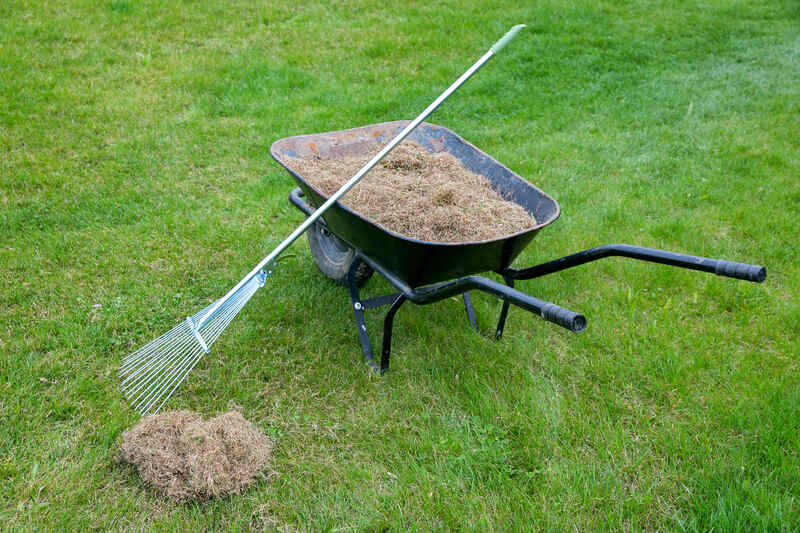
Thatch is a layer of old, dead grass stems that forms between the soil and the grass blades. While a little thatch is healthy, a 1-inch thick layer can suffocate your lawn by preventing water, air, and nutrients from reaching the roots.
In Bakersfield, the best time to dethatch is in mid-to-late spring or early fall. Once a year is usually enough.
How to tell if you have thatch:
- Your lawn feels spongy or bouncy when you walk on it.
- Water runs off instead of soaking in.
See Related:
— How to Dethatch Your Lawn
— How to Prevent Thatch in Your Lawn
— Signs Your Lawn Has Too Much Thatch
— Benefits of Dethatching the Lawn
5. Aerate Your Soil
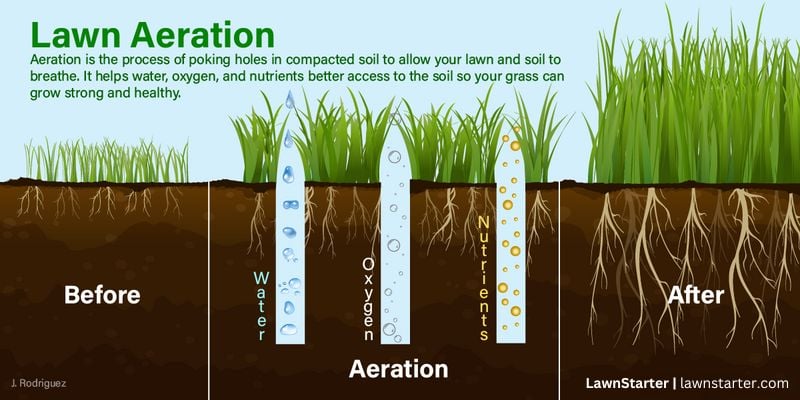
When soil compacts, air, sunlight, and water aren’t able to penetrate and reach your grass’s root system. If grass doesn’t get the nutrients and water it needs, it won’t grow well.
Core aeration works well to relieve compaction by creating small holes in the soil, helping nutrients enter.
You can either purchase an aerator, rent one from a lawn care service, or hire a lawn care professional to aerate your lawn.
See Related:
— Aeration vs Dethatching: What’s the Difference?
— How to Aerate a Lawn
6. Fertilize at the Right Time

In Bakersfield, most lawns are made up of warm-season grasses, which begin actively growing as the weather warms up. That means April to May is the ideal time to fertilize your lawn. Fertilizing gives your grass a boost of nutrients and vitamins before the main growth season begins.
You can apply fertilizer yourself, or you can hire a lawn treatment service to aerate your lawn.
If you opt to DIY your lawn fertilization, follow the instructions on the fertilizer package. Some packages may advise you to continue a feeding schedule throughout the summer. Others might recommend that you only do one or two applications. Make sure you look at their specific weather recommendations to ensure it is the proper timing to fertilize your lawn.
See Related:
— When to Fertilize Your Lawn in California
— How to Fertilize Your Lawn
— Slow-Release vs Quick-Release Fertilizer
7. Watch for Grubs
Grubs feed on grass roots and can cause serious damage if left unchecked. So, if your grass is turning brown, grubs might be to blame. Fortunately, if you’ve been mowing properly, watering deeply but infrequently, and fertilizing at the right time, your healthy lawn will naturally resist grub infestations.
Here’s how to check for grubs:
- Gently pull up the turf in the affected area. If it lifts easily, like freshly laid sod, take a look underneath.
- If you find more than 5 or 6 white, C-shaped grubs per square foot, you likely have an infestation.
To get rid of grubs, apply an insecticide in late spring or early summer when grubs are still small, or consider adding beneficial nematodes to your lawn.
See Related:
— Signs Your Lawn Has Grubs
— Lawn Grubs: How and When to Kill Them
DIY or Hire a Pro for Your Spring Lawn Care
Taking care of your lawn this spring in Bakersfield isn’t complicated. Your goal is to prepare your grass for the summer months and their higher temperatures. If you want your grass to survive all year round, proper maintenance is essential. Follow these tips, and your grass will be the envy of the neighborhood.
Need help preparing your lawn? Visit our Bakersfield lawn care page to hire a local LawnStarter lawn care pro. In addition to Bakersfield, LawnStarer provides lawn care services in other California cities, including Los Angeles, Sacramento, and Riverside.
Read More:
— Best Types of Grass for California
— Can a Clover Lawn Grow in Southern California?
— Southern California Landscape Ideas for Your Yard
— California Native Grasses to Replace Your Lawn
Main Image Credit: Photo of a lawn mowed by a LawnStarter Pro in Bakersfield, CA